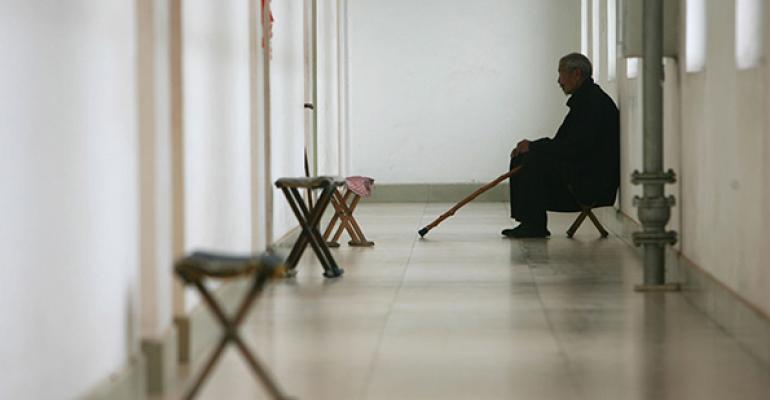Long-term care (LTC) involves the most intimate aspects of clients’ lives.
LTC is required when a condition, trauma or illness limits our ability to carry out basic self-care tasks, such as bathing, dressing or eating.
Here are some recent facts about trends in LTC insurance:

That number as percent of total U.S. personal health care spending: 9.3
Percent of annual estimated home care expenditures that Medicare paid for: 31.9
Percent of long-term-care costs that are paid out of pocket: 22
Percent paid for by private insurance: 18
The lifetime probability of becoming disabled in at least two activities of daily living or of being cognitively impaired, for people 65 and over: 68%
Total number of people who receive support in 2015 from the five main long-term care services: home health agencies, nursing homes, hospices, residential care communities and adult day service centers: 8,357,100
Ratio of older Americans who will incur more than $25,000 in lifetime out-of-pocket long-term costs before they die: one in five

Caregivers' Estimate of Lost Income
Estimate of lost income and benefits over a caregiver's lifetime for men and women caregivers, respectively: $283,716; $324,044
Number of Americans protected with long-term care insurance: 8.1 million
Total amount of LTC claims paid in 2012: $6.6 billion
Probability that if you buy a LTC policy at age 60 based on a zero-day elimination period, you will actually use it before you die: 50%
Probability the same policy will be used if purchased with a 90-day elimination period: 35%

Probability that a man will need to spend more than one year in a nursing home: 22%
For women: 36%
Probability that a man will need to spend more than five years in a nursing home: 2%
For women: 7%
Average annual cost in 2015 for adult day care (five days per week): $17,904
Average annual nursing home cost in 2015 for private room: $91,250

Nursing Home Population
Number of people in nursing homes throughout the U.S.: 1.4 million
Average annual rate of increase in private pay prices between 2002 and 2012 for a private or semiprivate room in a nursing home: 4.5 percent
Ratio of Americans turning 65 who will likely require some form of long-term care: 7 in 10
Ratio of Americans who report that family members have shared their preferences for long-term care options with them: two in five
Percent of Americans who have addressed the need for LTC within their own retirement plans: 29
Percent of caregivers who say their caregiving negatively impacts their own budgets and retirement plans: 57
Of the Americans who have formulated some ideas of how they will handle LTC, the percent who will rely on their savings: 35
Percent of American men who say they have addressed LTC in their retirement plans: 35
Sources: National Health Policy Forum (2014) The Basics: National Spending for Long-Term Services and Supports; Medicare and Medicaid Services; National Association for Home Care, Washington, DC; AARP Beyond 50: A Report to the Nation on Independent Living and Disability; Centers for Disease Control and Prevention Long-Term Care Services; Genworth Financial Inc.; The Retirement Project: Meeting the Long-Term Needs of the Baby Boomers; National Alliance for Caregiving, AARP; AARP Public Policy Institute: Valuing the Invaluable; American Association for Long-Term Care Insurance, 2014 LTCi Sourcebook; American Association for Long-Term Care Insurance; Genworth Financial Inc.; The Henry J. Kaiser Family Foundation; Congressional Budget Office; Department of Health and Human Services; Northwestern Mutual Long-Term Care Study; Genworth Financial Inc.






